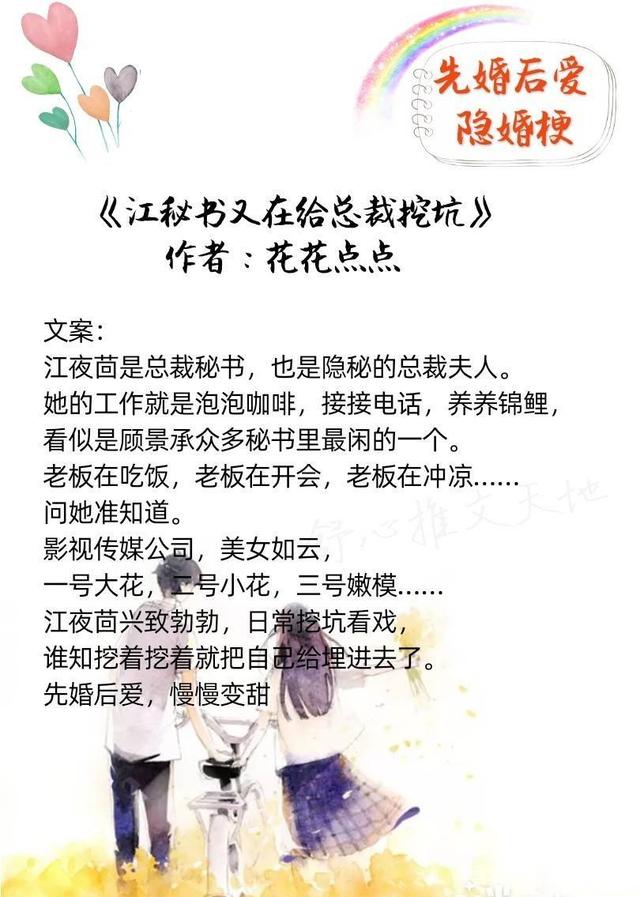英语词性用法图解(学好英语基础篇)
词性的分类
词类又叫词性,英语单词根据其在句子中的功用,可以分成十个大类。
1、 名词 noun 缩写n. student 学生
2、 代词 pronoun 缩写pron. you 你
3、 形容词 adjective 缩写adj. happy 高兴的
4、 副词 adverb 缩写adv. quickly 迅速地
5、 动词 verb 缩写v. cut 砍、割
6、 数词 numeral 缩写num. three 三
7、 冠词 article 缩写art. a 一个
8、 介词 preposition 缩写prep. at 在...
9、 连词 conjunction 缩写conj. and 和
10、 感叹词 interjection 缩写interj. oh 哦
前六类叫实词,后四类叫虚词。
下面我们分别来看一看这些词的用法。

名词
名词概论

名词复数的规则变化

名词的格
在英语中有些名词可以加"'s"来表示所有关系,带这种词尾的名词形式称为该名词的所有格,如:a teacher's book。名词所有格的规则如下:
1) 单数名词词尾加"'s",复数名词词尾没有s,也要加"'s",如the boy's bag 男孩的书包。
2) 若名词已有复数词尾-s ,只加" ' ",如:the workers' struggle工人的斗争。
3) 凡不能加"'s"的名词,都可以用"名词 of 名词"的结构来表示所有关系,如:the title of the song 歌的名字。
4) 在表示店铺或教堂的名字或某人的家时,名词所有格的后面常常不出现它所修饰的名词,如:the barber's 理发店。
5) 如果两个名词并列,并且分别有's,则表示"分别有";只有一个's,则表示'共有'。
如:John's and Mary's room(两间)John and Mary's room(一间)。
6) 复合名词或短语,'s 加在最后一个词的词尾。如:a month or two's absence。
7) 若名词复数为特殊变化形式,如man-men,则在其后直接加’s,如men’s room。

代词
代词pronoun简称pron是代替名词的一种词类。大多数代词具有名词和形容词的功能。英语中的代词,按其意义、特征及在句中的作用分为:人称代词、物主代词、指示代词、反身代词、相互代词、疑问代词、关系代词、连接代词和不定代词九种。
人称代词的用法:
I saw her with them, at least, I thought it was her.
我看到她和他们在一起,至少我认为是她。(her做宾语,them做介词宾语,her作主补)
A:Who broke the vase?--谁打碎了花瓶?
B:Me.--我。(me作主语补语= It's me.)
并列人称代词的排列顺序
1) 当数人称代词并列作主语时,其顺序为:
第二人称 -> 第三人称 -> 第一人称you -> he/she; it -> I
2) 复数人称代词作主语时,其顺序为:
第一人称 -> 第二人称 -> 第三人称we->you ->They
反身代词

指示代词
指示代词分单数(this / that)和复数(these / those)两种形式,既可作限定词又可做代词。
疑问代词
指人: who, whom, whose
指物: what
既可指人又可指物: which
代词比较辩异one, that和it
one表示泛指,that和it 表示特指。that与所指名词为同类,但不是同一个,而it 与所指名词为同一个。
I can't find my hat. I think I must buy one.(不定)
The hat you bought is bigger than that I bought.(同类但不同个)
I can't find my hat. I don' t know where I put it.( 同一物)

冠词
冠词是印欧语系和闪含语系的主语中,位于名词或名词词组之前或之后,在句子里主要是对名词起限定作用的词。冠词是一种虚词。
不定冠词a (an)与数词one 同源,是"一个"的意思。
定冠词的用法
定冠词the与指示代词this,that同源,有"那(这)个"的意思。
1)特指双方都明白的人或物:Take the medicine.把药吃了。
2)上文提到过的人或事:He bought a house. I've been to the house.他买了一个房子,我去过那个房子。
3)指世上独一无二的事物:the sun, the sky, the moon, the earth。
4)单数名词连用表示一类事物,如:the dollar 美元。
the fox 狐狸;或与形容词或分词连用,表示一类人:the rich 富人; the living 生者。
5)用在序数词和形容词最高级,及形容词only, very, same等前面:
Where do you live? I live on the second floor.你住在哪?我住在二层。
6)与复数名词连用,指整个群体:
They are the teachers of this school.指全体教师)
They are teachers of this school.(指部分教师)
7)表示所有,相当于物主代词,用在表示身体部位的名词前:
She caught me by the arm..她抓住了我的手臂。
8)用在某些由普通名词构成的国家名称、机关团体、阶级、等专有名词前:
the People's Republic of China中华人民共和国
9)用在表示乐器的名词之前:She plays the piano.她会弹钢琴。
10) 用在姓氏的复数名词之前,表示一家人:the Greens格林一家人 (或格林夫妇)。
11) 用在惯用语中:
in the day, in the morning (afternoon,evening),the day after tomorrow
the day before yesterday, the next morning, in the sky (water,field,country)
in the dark, in the rain, in the distance, in the middle (of),in the end,
on the whole, by the way, go to the theatre
冠词位置
1) 不定冠词位置 不定冠词常位于名词或名词修饰语前。注意:
a. 位于下列形容词之后:such,what,many,half,
such an animal; Many a man
b. 当名词前的形容词被副词as, so, too, how, however, enough修饰时,不定冠词应放在形容词之后:It is as pleasant a day as I have ever spent.
c. quite,rather与单数名词连用,冠词放在其后。
但当rather,quite 前仍有形容词,不定冠词放其前后均可。如:quite a lot
d. 在as,though 引导的让步状语从句中,当标语为形容词修饰的名词时,不定冠词放形容词后:Brave a man though he is,he trembles at the sight of snakes.
当名词被比较级形容词修饰时,不定冠词通常置于比较级形容词之后。
2) 定冠词位置 定冠词通常位于名词或名词修饰语前,但放在all, both,double,half,twice,three times等词之后,名词之前。
All the students in the class went out.班里的所有学生都出去了。

数词
表示数目多少的数词叫基数词;表示顺序的数词叫序数词。
数词的用法
1)倍数表示法
a. 主语 谓语 倍数(或分数) as adj. as
I have three times as many as you.我有你三倍那么多。
b. 主语 谓语 倍数(分数) the size (amount,length…) of…
The earth is 49 times the size of the moon.地球是月球的49倍。
c. 主语 谓语 倍数(分数) 形容词(副词)比较级 than…
The grain output is 8 percent higher this year than that of last year.
d. 还可以用by 倍数,表示增加多少倍
The production of grain has been increased by four times this year.
2)分数表示法
构成:基数词代表分子,序数词代表分母。分子大于1时,分子的序数词用单数,分母序数词用复数:1/3 one-third ;3/37 three and three-sevenths

形容词及其用法
形容词(adjective),简称adj.或a.,很多语言中均有的主要词类中的一种。主要用来修饰名词的词,表示事物的特征。形容词用来修饰名词或代词,表示人或事物的性质、状态,和特征的程度好坏,与否。
形容词作定语修饰名词时,要放在名词的前边。但是如果形容词修饰以-thing为字尾的词语时,要放在这些词之后,例如:
something nice
以-ly结尾的形容词
1)friendly,deadly,lovely,lonely,likely,lively,ugly,brotherly,仍为形容词。
2)有些以-ly 结尾既为形容词,也为副词。
daily,weekly,monthly,yearly,early
The Times is a daily paper.泰晤士报是日刊。
The Times is published daily.泰晤士报每天都出版。
用形容词表示类别和整体
某些形容词加上定冠词可以泛指一类人,与谓语动词的复数连接。如:the dead,the living,the rich,the poor,the blind,the hungry
多个形容词修饰名词的顺序
限定词--数词--描绘词--(大小,长短,形状,新旧,颜色) --出处--材料性质,类别--名词
a small round table;a tall gray building;a dirty old brown shirt;a famous German medical school
典型例题:
1) Tony is going camping with ___ boys.
A. little two other B. two little other
C. two other little D. little other two
答案:C。
2)One day they crossed the ____bridge behind the palace.
A. old Chinese stone B. Chinese old stone
C. old stone Chinese D. Chinese stone old
答案A。
3) ---- How was your recent visit to Qingdao?
---- It was great. We visited some friends,and spent the ___days at the seaside.
A. few last sunny B. last few sunny
C. last sunny few D. few sunny last
答案:B。

副词及其用法
副词(adverb,简写为adv)是一种用来修饰动词、形容词、全句的词,说明时间、地点、程度、方式等概念的词。副词是一种半虚半实的词。副词可分为:地点副词、方式副词、程度副词、疑问副词和连接副词。
副词的排列顺序:
时间,地点副词,小单位的在前,大单位在后。
注意:副词enough要放在形容词的后面,形容词enough放在名词前后都可。
I don't know him well enough.
There is enough food for everyone to eat. There is food enough for everyone to eat.
兼有两种形式的副词
1) close与closely
close意思是"近";closely 意思是"仔细地"
He is sitting close to me.
Watch him closely.
2)late 与lately
late意思是"晚";lately 意思是"最近"
You have come too late. 你来得太晚了。
What have you been doing lately?你最近在做什么?

动词
动词根据其后是否带有宾语,可分为两类,分别是:及物动词(Transitive Verb)、不及物动词(Intransitive Verb),缩写形式分别为vt. 和vi.。
在英语中按动词后可否直接跟宾语,可以把动词分成两种:及物动词与不及物动词。及物动词 vt. ,字典里词后标有vi. 的就是不及物动词。
不及物动词后不能直接跟有动作的对象(即宾语)。若要跟宾语,必须先在其后添加上某个介词,如to,of ,at后方可跟上宾语。
及物动词:又称“他动词”。又称“外动词”。动词的一种。它所表示的动作常涉及动作者以外的事物,如“吃”、“穿”、“读”、“写”等。字典里词后标有vt. 的就是及物动词。及物动词后必须跟有动作的对象(即宾语),并且可直接跟宾语。
系动词
1)状态系动词:用来表示主语状态,只有be一词,例如:He is a teacher.
2)持续系动词:用来表示主语继续或保持一种状况或态度,主要有keep, rest, remain, stay, lie, stand, 例如:He always kept silent at meeting.他开会时总保持沉默。
3)表像系动词:用来表示"看起来像"这一概念,主要有seem, appear, look, 例如:
He looks tired.他看起来很累。
4)感官系动词:感官系动词主要有feel, smell, sound, taste, 例如:
This kind of cloth feels very soft. This flower smells very sweet.
5)变化系动词:这些系动词表示主语变成什么样,变化系动词有become, grow, turn, fall, get, go, come, run. 例如:He became mad after that.自那之后,他疯了。
6)终止系动词:表示主语已终止动作,主要有prove, turn out, 表达"证实","变成"之意,例如:The search proved difficult.搜查证实很难。
非谓语动词
1)不定式
时态\语态 主动 被动
一般式 to do to be done
完成式 to have done to have been done
2)动名词
时态\语态 主动 被动
一般式 doing being done
完成式 having done having been done
3)分词
时态\语态 主动 被动
一般式 doing being done
完成式 having done having been done
否定形式: not 不定式,not 动名词,not 现在分词

连词
连词是一种虚词, 它不能独立担任句子成分而只起连接词与词,短语与短语以及句与句的作用。连词主要可分为两类:并列连词和从属连词。并列连词用来连接平行的词、词组和分句。
如:and, but, or, nor, so, therefore, yet, however, for, hence, as well as, both…and, not only…but also, either…or, neither…nor, (and)then等等。
not…but… 意思为"不是……而是……" not 和but 后面的用词要遵循一致原则。
They were not the bones of an animal, but (the bones) of a human being.
比较so和 such
其规律由so与such的不同词性决定。such 是形容词,修饰名词或名词词组,so是副词,只能修饰形容词或副词。so 还可以表示数量的形容词many,few,much, little连用,形成固定搭配。
so adj. such a(n) n.
so adj. a(n) n. such n. (pl.)
so adj. n. (pl.) such n. (pl.)
so adj. n. [不可数] such n. [不可数]
so foolish ;such a fool
so nice a flower;such a nice flower
so many/ few flowers;such nice flowers
so much/little money;such rapid progress
so many people ;such a lot of people

介词
介词是一种用来表示词与词、词与句之间的关系的虚词 ,在句中不能单独作句子成分。介词后面一般有名词代词或相当于名词的其他词类,短语或从句作它的宾语。介词和它的宾语构成介词词组,在句中作状语、表语、补语或介词宾语。介词可以分为时间介词、地点介词、方式介词、原因介词和其他介词。
介词的种类
介词分简单介词和短语介词两种,简单介词如 in ,under ,on ,for ,after ,等,短语介词指多个单词构成的介词,如in front of ,out of ,instead of ,far from ,apart from 等。
介词口诀
自从以当为按照,由于对于为了到;和跟把比在关于,除了同对向往朝;用在名词、代词前,修饰名代要记牢。
省略介词的几种情况
1、表示时间的短语中如果有next,last,one,this,every,each,some,any,all等单词时,不用介词。
Can you come to see me next Monday?下周一你能来看我吗?
We got married last year 我们去年结的婚。
You can come any day you like 你哪一天来都行。
2、在口语中,星期名称前的on常被省略。
Why don’t you come and play(on)Sunday evening?星期日晚上到我家来玩不好吗?
3、在不定冠词a或an(a或an的意思是“每一......”)的短语中,不用介词。
three meals a day 一日三餐
thirty miles an hour 每小时三十英里
4、在what time前的at经常被省略,尤其在口语中。
(At)what time did she say she was coming?她说她几点钟来?
5、含有height(高度),length(长度),size(尺码),shape(现状),age(年龄),colour(颜色),weight(重量)等词语在句子中做表语时,短语前不用介词。
She is just the right height to be a model 她的身高正合适当模特。
What size are your shoes?你的鞋是多大号的?
Her bag is the same color as mine 她的包和我的包颜色一样
6、在in the same way,in this way,in another way等短语中,in常常被省略
Please try it again(in)the same way 请用同样的方法再试一次
7、在表示持续一段时间的短语中,for常被省略
They stayed there (for)six months 他们在那里待了6个月
连词是一种虚词, 它不能独立担任句子成分而只起连接词与词,短语与短语以及句与句的作用。
以上就是英语词类基础知识总结,你都能记住吗?对于不同词性的词的具体用法我们会在以后的更新中逐一详细讲解,敬请期待。
希望你在今天的阅读中有所收获。
See you!
,免责声明:本文仅代表文章作者的个人观点,与本站无关。其原创性、真实性以及文中陈述文字和内容未经本站证实,对本文以及其中全部或者部分内容文字的真实性、完整性和原创性本站不作任何保证或承诺,请读者仅作参考,并自行核实相关内容。文章投诉邮箱:anhduc.ph@yahoo.com






